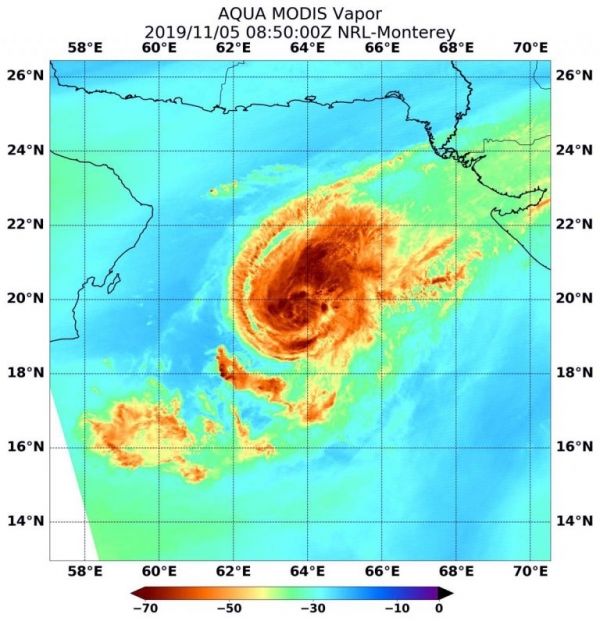When NASA’s Aqua satellite passed over the Northern Indian Ocean, water vapor data provided information about the intensity of Tropical Cyclone Maha.
NASA’s Aqua satellite passed Tropical Cyclone Maha on Nov. 5 at 3:47 a.m. EST (0847 UTC) the Moderate Resolution Imaging Spectroradiometer or MODIS instrument gathered water vapor content and temperature information. The MODIS image showed highest concentrations of water vapor and coldest cloud top temperatures were in a fragmented band of thunderstorms around the low-level center of circulation as well as northeast of the center.
MODIS data also showed the coldest cloud top temperatures were as cold as or colder than minus 70 degrees Fahrenheit (minus 56.6 degrees Celsius) in those storms. Storms with cloud top temperatures that cold have the capability to produce heavy rainfall.
Read more at NASA / Goddard Space Flight Center
Image: NASA’s Aqua satellite passed over Tropical Cyclone Maha in the Eastern Pacific Ocean on Nov. 5 at 3:50 a.m. EST (0850 UTC) and found highest concentrations of water vapor (brown) and coldest cloud top temperatures in fragmented thunderstorms around the low-level center of circulation and northeast of the center. Credits: NASA/NRL


